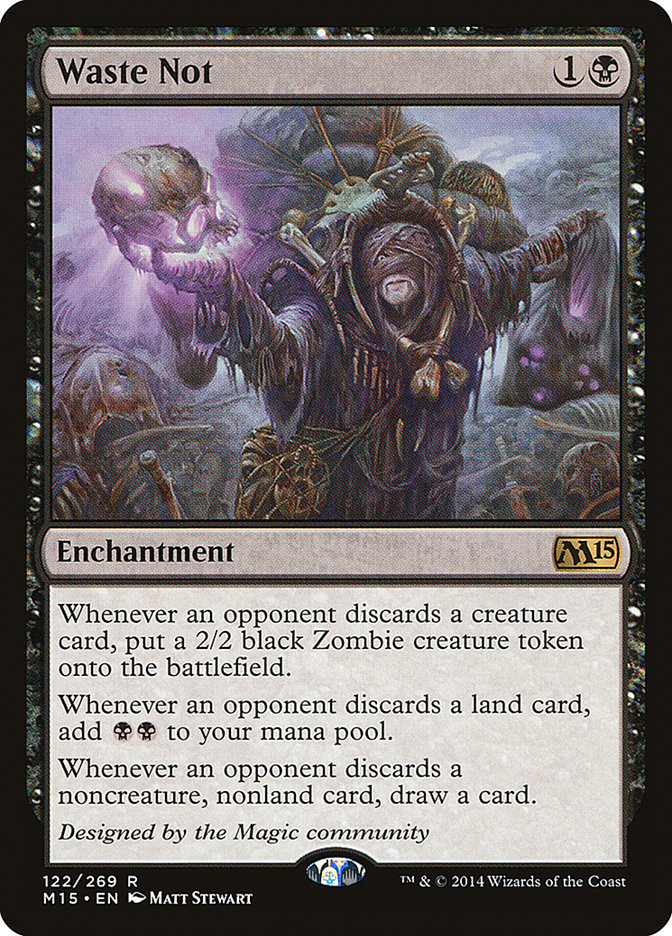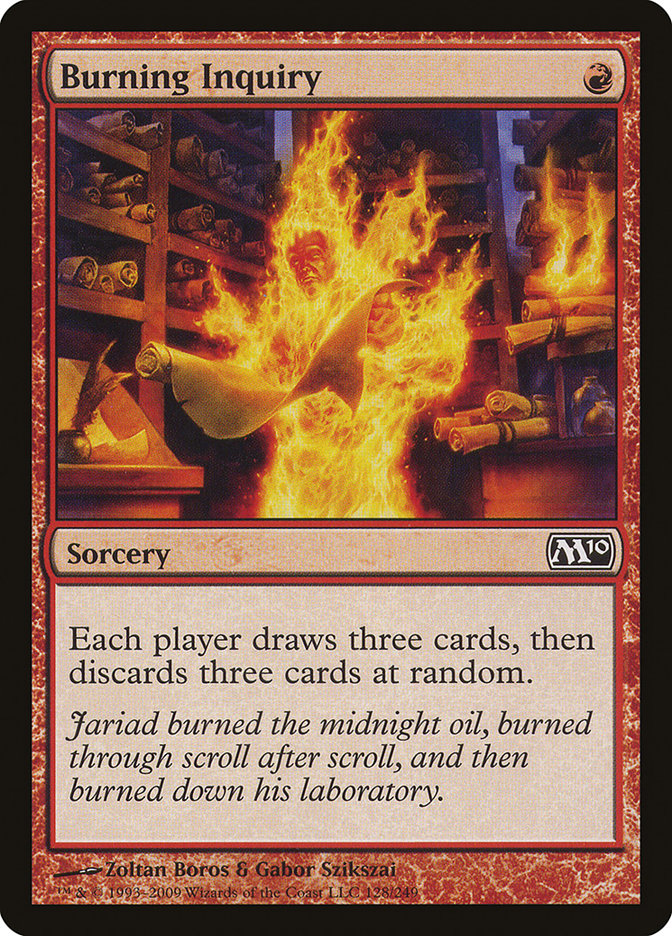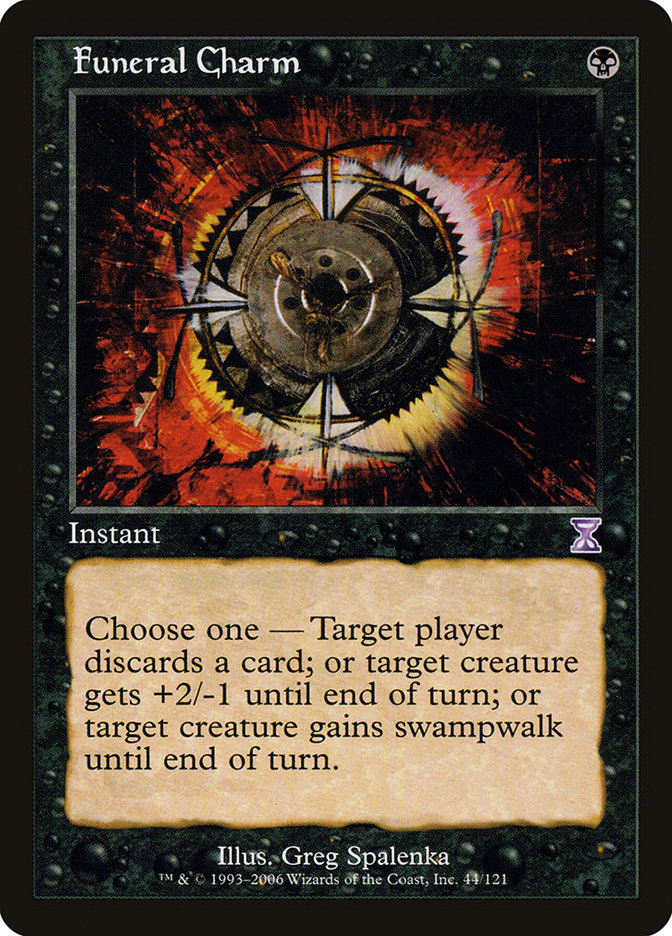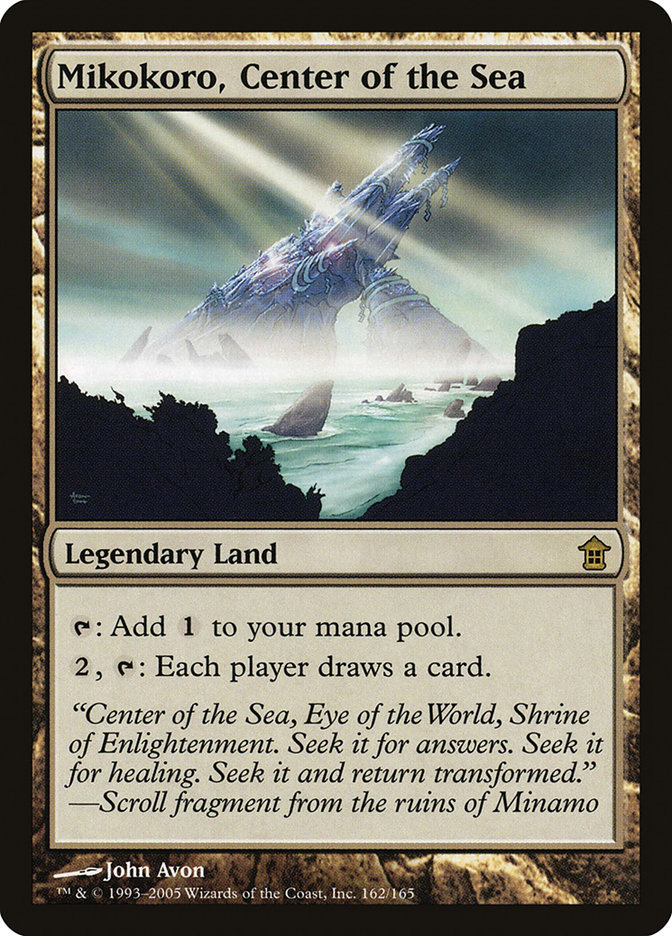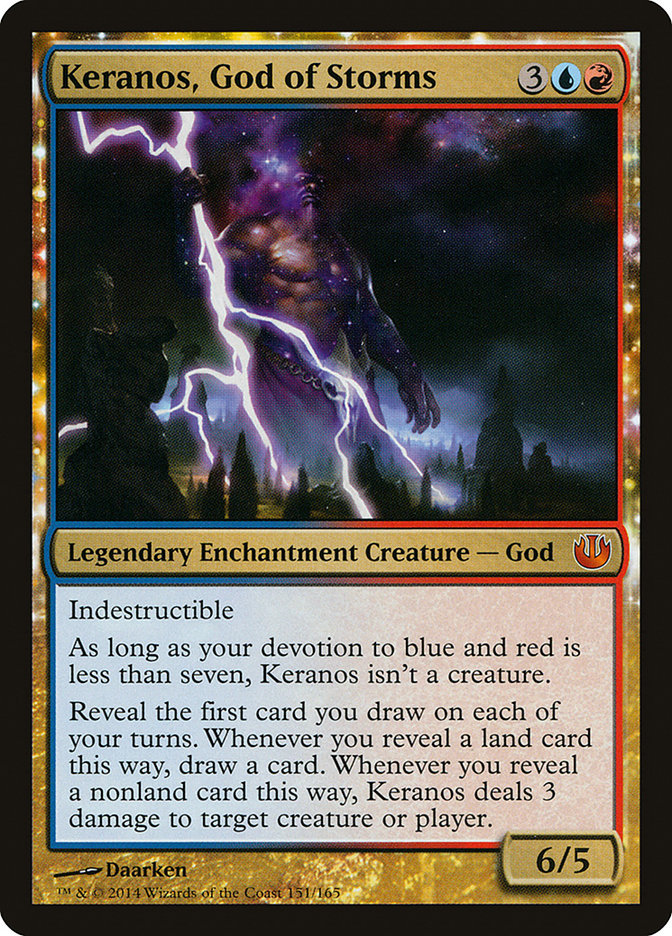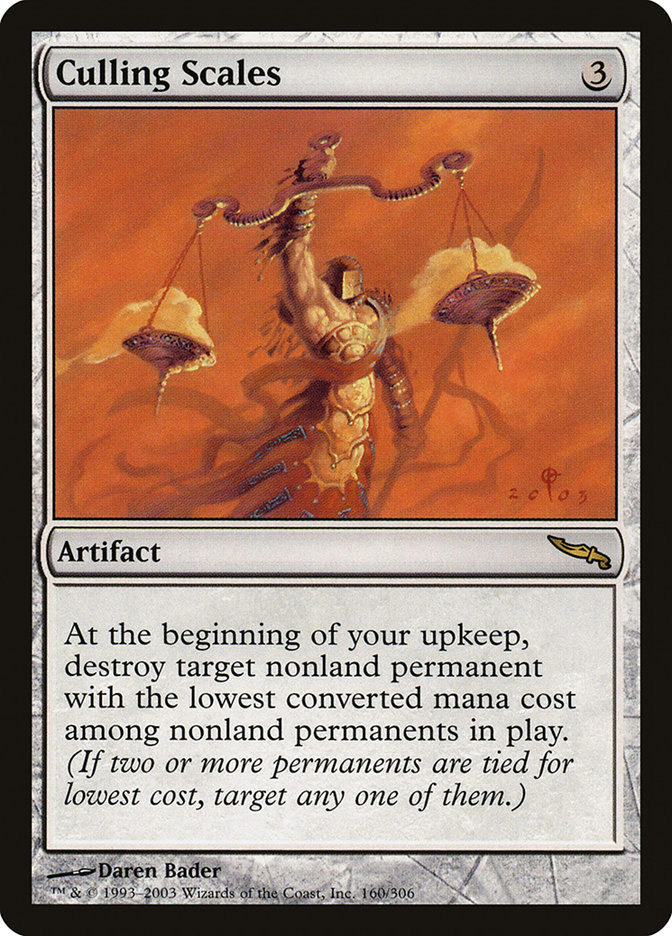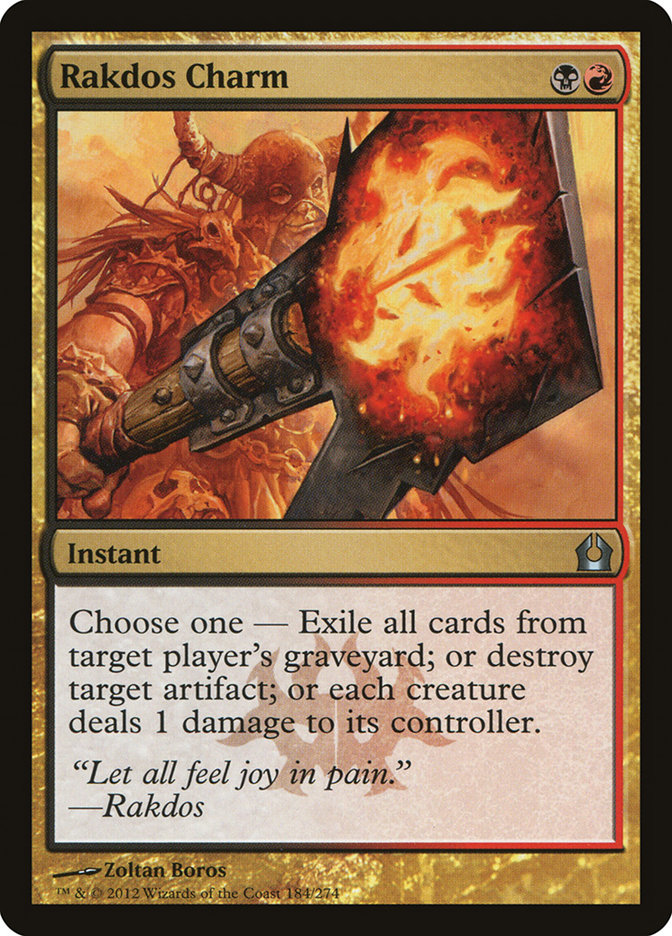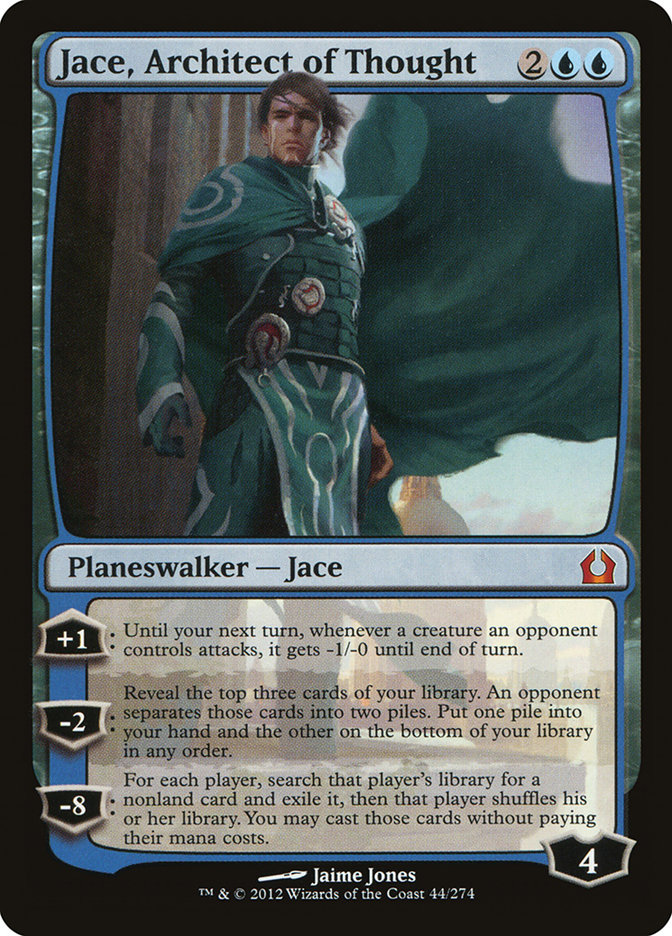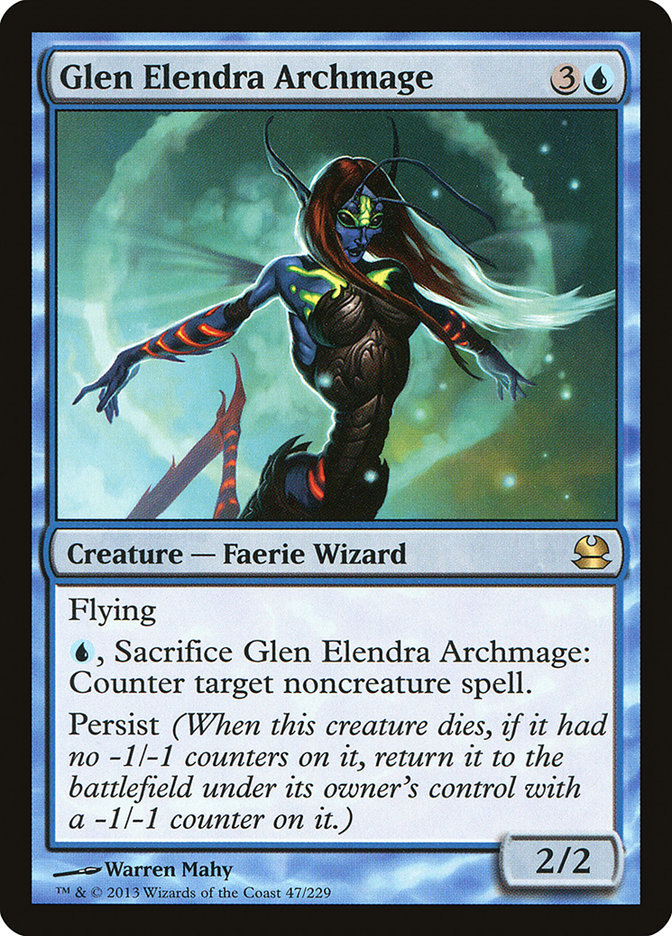Let’s be real. You can try something that you really want to have work out. Even so, no matter how much you want them to, sometimes things don’t go nearly
as well as you’d like.
I didn’t expect to take the trek down to Cincinnati this last weekend, but sometimes, things are so compelling, you have to just answer the call. Since
Grand Prix Las Vegas, I’d been working on a deck, you see…
It hadn’t been a deck that had been winning nearly enough for my tastes, but sometimes you can just feel that a deck is doing something that makes it
worthwhile. In this case, it was taking the 8-Rack shell, adding in Kolaghan’s Command, and just letting the deck evolve. Soon enough, it included Waste
Not, and then, after some spoiler-searching, it included this combo:
One of the things that happens when you’re playing a deck that is in the 8-Rack style (running four copies of The Rack and four copies of Shrieking
Affliction) is that your copious discard often ends up meaning that you have extra discard wasting away while your opponent’s hand is completely empty.
If you’re a deck employing The Rack, that is just fine. But if you’re a deck running Waste Not, you actually want your opponent to be discarding things.
This is where a card like Burning Inquiry is actually so incredibly impressive. With a Waste Not out, a Burning Inquiry ends up being a little card
advantage engine, with only land managing to dodge it. Especially when you start being able to potentially do it again another time via Jace, Vryn’s
Prodigy (technically, Jace, Telepath Unbound) or Snapcaster Mage, it can begin to feel particularly absurd. Even the mana production of Waste Not can be
meaningful, where a Burning Inquiry fueling Waste Not pushes you into other discard spells, which perhaps you now have the mana for, and you can continue
the engine.
In reading all of that, you might be able to sense my excitement about the deck, and if you can, you are sensing me correctly. In the days before the SCG
Open in Cincinnati, I was on an incredible winning streak, and I decided at the spur of the moment to just go. Madison to Cincinnati is about six
hours of driving (six hours and forty-three minutes, according to Google, who drives like a wuss), and that is certainly within my range for a reasonable
trip. Add to that the potential to see a few Ohio friends and that I just wanted to get a better sense of Modern to help my friends Matt Severa and Brian
Kowal (among others) prepare for Grand Prix Oklahoma City, and taking the trip just felt like it made sense.
I didn’t do great.
Here is the deck I played at the Open:
Creatures (10)
Planeswalkers (2)
Lands (21)
Spells (27)

I dropped with only two wins. Why such a poor performance with a deck I was so excited about? There are a host of reasons.
1 – Incomplete Revisions
When I got my excitement reinvigorated for this deck, it was entirely because of Michael Majors’ very similar Grixis Control deck running four Jace, Vryn’s
Prodigy. I’d been contemplating adding Jace to the deck, and I hadn’t pulled the trigger yet. Michael’s deck was so similar, it was exciting. This was
evidence that the core shell of the deck was reasonable.
Of course, fitting in four copies of a card is a difficult matter. In order to add something in, you have to take something out. This meant that:
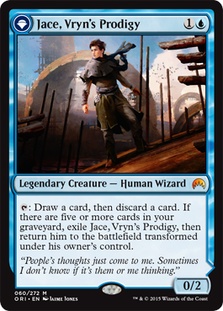




…would replace:
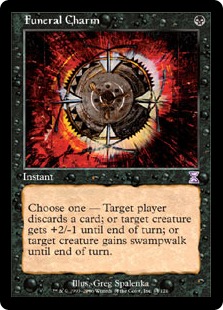
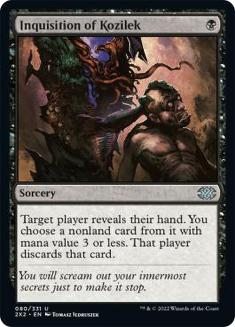
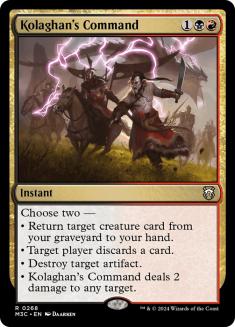
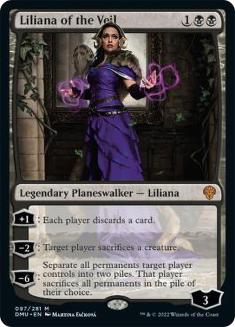

Especially key in this transition was the removal of Liliana of the Veil. In addition, the original build of the list was a four Liliana of the
Veil list. I’d had an earlier iteration of the list that ran Cyclonic Rift but had cut the card because it was too narrow. My last day of testing found me
occasionally wanting the card once more, and as I tried it out again, I was really happy how Jace, Telepath Unbound interacted with it. This kicked the
extra Liliana of the Veil out of the deck, and down to only two copies.
Of course, all of this means that I also was running many less discard spells. One of the things that had happened quite a bit with the previous
version of the deck was that you’d lock someone out of cards and then be able to use the following cards to lock out their non-instant draws:
The newest iteration, while more stable from a fundamental perspective, simply didn’t have this element figuring as strongly, and so an angle of the deck
was lost.
2 – Mana
I’m still working out the correct mana for this deck. When I first built the deck, the choice to aggressively discard, especially the choice to run four
Liliana of the Veil, ended up making one card really shine:
This card is a very dangerous card to use. In fact, I’d only advocate using it in a very narrow set of scenarios. The way that this discard package worked,
it made a lot of sense to have it included in the deck. In addition, though, with both a colorless source of mana in the deck and eleven spells that cost a
single black, I felt incentivized to play Urborg, Tomb of Yawgmoth. Finally, because the deck could so easily flood (despite the 21 lands), the needs to
play a Mikokoro and an Urborg really conflicted with some mana choices that might make it less punishing.
Michael Majors, for example, really advocated the use of Blackcleave Cliffs, absent from this list. Without the incentives to be playing Mikokoro and
Urborg, making room for a few of these becomes much more reasonable. At that point, some other small changes can find their way into the deck to
accommodate a more robust manabase.
3 – Bad Sideboarding
The Jace build of the deck was a last minute affair. Even before the Open, it was an amalgam of two previous sideboard builds I’d tried out with the deck
mixed with the Michael Majors build, and I wasn’t fully happy with it. I’d had a brainstorming session where I went through what I imagined could be every
useful card, sent the sideboarding notes to a few friends, and then, the morning that I left, packed up all of the extra cards so that I had effectively a
40-card sideboard.
Inevitably, mistakes were made.
For example, Rakdos Charm was one of the cards I’d really wanted to have in my sideboard. I realized this immediately during round 1 in my feature match
against Brian DeMars playing Affinity. I looked several times over, but I couldn’t find it. After some thinking, I realized I had just neglected to put it
in the deck.
There were some other choices that ended up being similar. I got taken out by a dedicated Blood Moon deck in my final round of the tournament, where I won
each game that my opponent didn’t drop a turn 2 Blood Moon (i.e., one game of the three). My sideboard was woefully short of reasonable answers even though
I knew this was a card I absolutely needed to be able to answer.
In a match loss against Jund, I also discovered that one of my favorite cards was not good enough. I dropped it in both games 2 and 3, and those were the
two I lost. Against a deck like Jund, if you don’t already have a very full hand, dropping Keranos on the table feels very anemic when you’re potentially
facing down Tarmogoyf and friends. Sure, when your hand is full, the extra ‘free’ Bolt and free card draw is meaningful, but when you’re taking the time (a
full turn) and the resources (discarding other cards in a two-sided Liliana of the Veil attrition game) to drop this, it seemed to me to be far, far too
much of a cost.
Ultimately, all of these small mistakes in the sideboard add up.
4 – Lack of Modern Practice
I’ve been playing some Modern, but basically, since the last Modern Grand Prix, for Constructed, it has been Standard.
Where I’m At
With all of these lessons in mind, here is where I’m currently at with the deck:
Creatures (9)
Planeswalkers (3)
Lands (22)
Spells (26)

There are a number of important shifts.
1 – The Mana is Improved
One of the big lessons of the deck was the real need for Blackcleave Cliffs. Lightning Bolt/Inquisition of Kozilek is an important potential play on turn
1, and versus the most aggressive decks, you can’t afford to mess around with this. Everything else takes this in mind, and without a 23rd land, I don’t
think you can mess around with colorless land unless you really push back into four Liliana territory where the potential for color screw is less
important.
2 – Shifting the Discard
It was rare that I felt the need for that third Thoughtseize as opposed to an Inquisition of Kozilek. A part of it was that the deck is simply better at
making an opponent discard than other decks are. Another part is that it has more means to recast the spell. With that in mind, the shift to a mix that
preserves the life total more is important. In addition, the missing Liliana of the Veils has been a difficult part of the deck to lose. Finding room for
that third one is important, and I’m still considering whether I want to shift back to all four.
3 – Too Many Jace
Four Jace, Vryn’s Prodigy is a lot of Jace. Even with a build that was meant to make greater use of them, without Serum Visions to sculpt hands, I was just
getting “Jace flooded” too often. Something had to give.
4 – A More Honed Sideboard
A part of what makes this sideboard great are many of the cards that absolutely have not changed. Engineered Explosives, Nihil Spellbomb, Dispel,
Hurkyl’s Recall, Slaughter Pact, Terminate, Olivia Voldaren, and Vandalblast were all great. Let’s keep them around.
There needed to be actual real answers to Blood Moon. As uncommon as it is, it is absolutely crippling. At the same time, I wanted that answer to be
reasonable against cards that didn’t have the word “Moon” in the title. Culling Scales is an underused gem, and I think it is fabulous.
Rakdos Charm isn’t the best answer to Splinter Twin decks, especially because they can be assuming you’re going to potentially have answers that make the
combo portion of the deck less reliable. Even so, you can still get lucky with it in that matchup. More importantly, though, the card is a powerful answer
to the graveyard and another Shatter effect versus Affinity.
I was wildly underwhelmed by Keranos, God of Storms. This Jace is tagged in for that same job: fighting a grind. Four mana is an incredible amount
less than five, especially if you might be needing an extra mana to protect it the turn you’re going to try to cast it. The incidental hate it has against
Deceiver Exarch is also worthwhile.
You could have any number of possible anti-spell cards here. Glen Elendra Archmage can help out the Burn matchup, is one of the most devastating cards in a
control mirror, and is a flier against Affinity and Infect. With a testimony like that, I’m almost convinced the card should be maindeck, but that isn’t
quite accurate. While it is true the card has a use against Burn and Affinity, in those matchups, your game 1 life total is under such a crunch that a
four-drop is incredibly unreliable. In the control matchup, without countermagic to fight for it when you cast it, it is an expensive investment to make
for a card that doesn’t follow through with the deck’s gameplan.
Right now, the deck certainly has some glaring weaknesses. Burn remains a difficult matchup. One of the best ways to fight this is to use Vampiric Link in
the sideboard and a card like Gurmag Angler in the maindeck. Another option is to use a card like Vampire Nighthawk. Neither is particularly great, and I
suppose I’m resigned to just focusing on other matchups and playing enough sideboard cards where the matchup is simply winnable. Affinity remains a good
matchup after the full match but rough game 1. Certain cards designed for a good grind, like Kitchen Finks or Voice of Resurgence, feel really incredible
against this deck. G/R Tron can be a nightmare, though it hasn’t been as popular as of late.
However, the deck is also shockingly fun. I do think that the deck needs some further honing, but it also still feels very, very powerful. I’ve had turn 3
board situations which feel closer to Legacy games than anything else. The core to the deck stands toe-to-toe with people trying to fight out a control
game, and the deck feels great against any opponent trying to put together anything resembling a combo.
We’re getting close to a new set, so soon I’m going to be turning my eye towards Standard and Draft in preparation for Wisconsin’s first Pro Tour. Until
then, though, expect me to be in the queues making Zombies and drawing cards.

